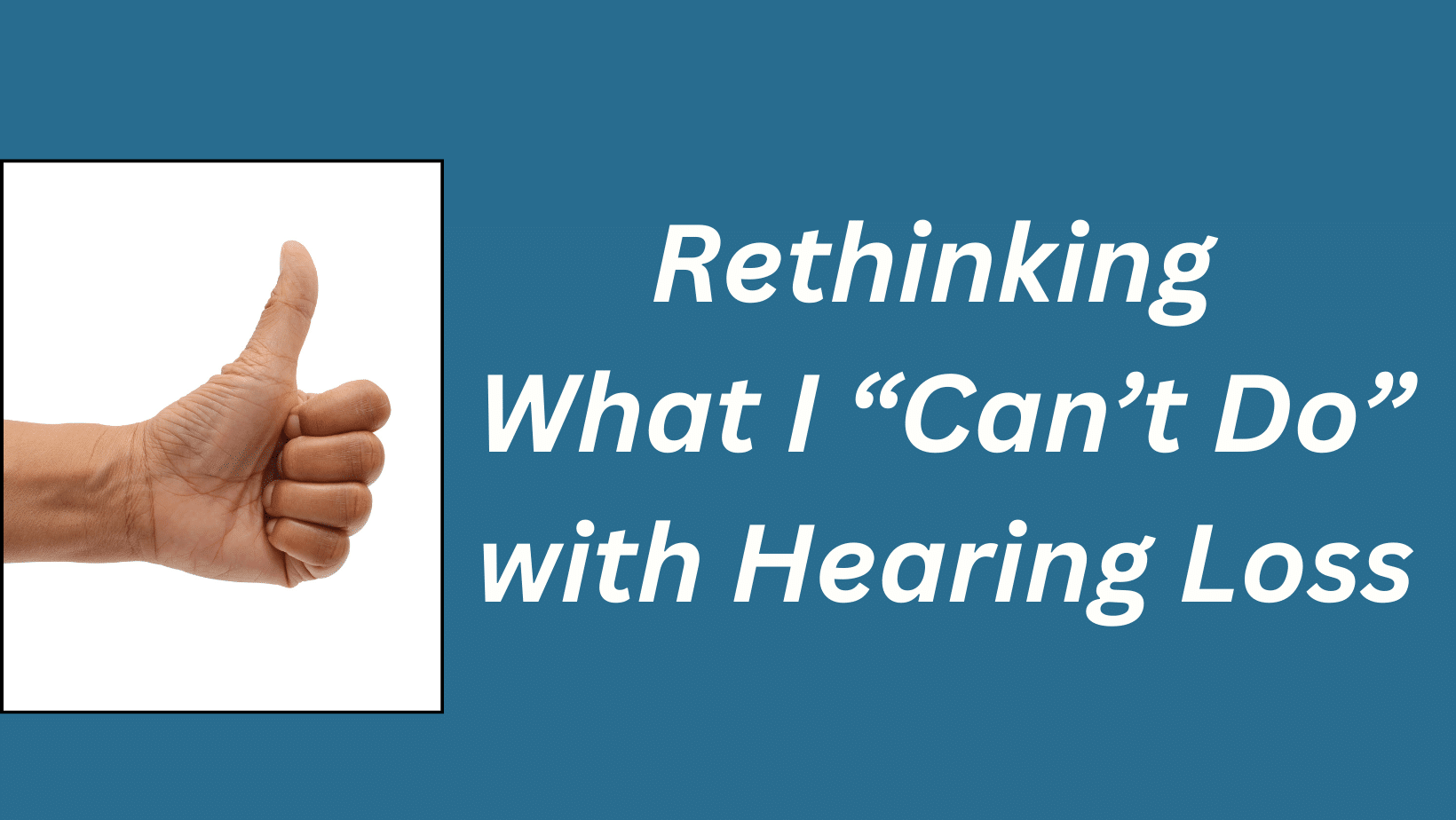Business meetings involve being able to follow what people are saying. I can’t do the meeting minutes.
Phone calls with strangers are difficult because of unfamiliar speech patterns. Can you make this phone call for me – I can’t do it.
On a walk with friends, we hear a bird call from the trees. My friends look up to the left, while I look up to the right. I can’t do sound localization.
I lose the conversation thread of heated conversations with friends, or need the punchlines to be repeated, sometimes more than once. I can’t do group conversations.
I decide against going to a movie, or a restaurant, a play or a concert because, even with accommodations, my reactive tinnitus goes in overdrive. I can’t do noise.
Tiny tensions occur almost daily between the Hearing Husband and me because of words not expressed well – from the wrong room, from facing in the wrong direction, or repeated in an exaggerated manner or a too-loud voice. I can’t make other people understand what I need.
I can’t do this. I can’t do that. My hearing loss doesn’t let me.
That was my prevailing mindset for decades until one day, I realized that many of my “can’t do’s” had disappeared, transformed into I can do this and then to I AM doing this.
What changed?
Certainly not my hearing loss; it was just as severe as ever and getting worse.
I had changed. My approach to my hearing loss and communication had dramatically shifted, due partly to the wonder of ever-improving technology and partly to making connections in the hearing loss world that ignited in me a powerful need to take charge of my own hearing loss journey. I explored and practiced how I could communicate better in all areas of my life.
It was a powerful, life-changing discovery that Shari Eberts and I wrote about in our book Hear & Beyond: Live Skillfully with Hearing Loss.
So, what exactly changed?
My sound localization isn’t much better, but I’m comfortable in asking where the sound is coming from and what bird it might be (although if it’s anything more exotic than a crow, people usually don’t know). If I’m on my own, I just acknowledge the sound as something lovely. I can hear birds – I just don’t know where they are.
Participating in group meetings is easier, thanks to Zoom and similar platforms that offer captioning, transcripts and even summaries of what was discussed. I still don’t like being the minutes-taker, but I no longer have a valid excuse to turn down the job. I can do tasks that were once terrifying and tough.
Group conversations remain a challenge, especially in noisy settings, but I can do them. I encourage best practices, such as choosing the best seat and adjusting light and noise levels as much as possible. Most importantly, I’ve learned that I have the right to ask this of the group, and it works best if I ask in a positive way that benefits everyone. Please face me, could we slow down, one person at a time, what has the conversation shifted to, and always – please repeat that. Thank you.
Using my smartphone, phone calls have become almost a delight. The speakers’ words stream into my ears, live captions provide written words that I may not hear correctly, and video call apps such as FaceTime enhance the overall interactions. I can do phone calls.
And as for those daily, minor moments of friction with the Hearing Husband – that’s hearing loss, that’s life, that’s intimate relationships, that’s communication. We address it and move on.
I can do hearing loss.






